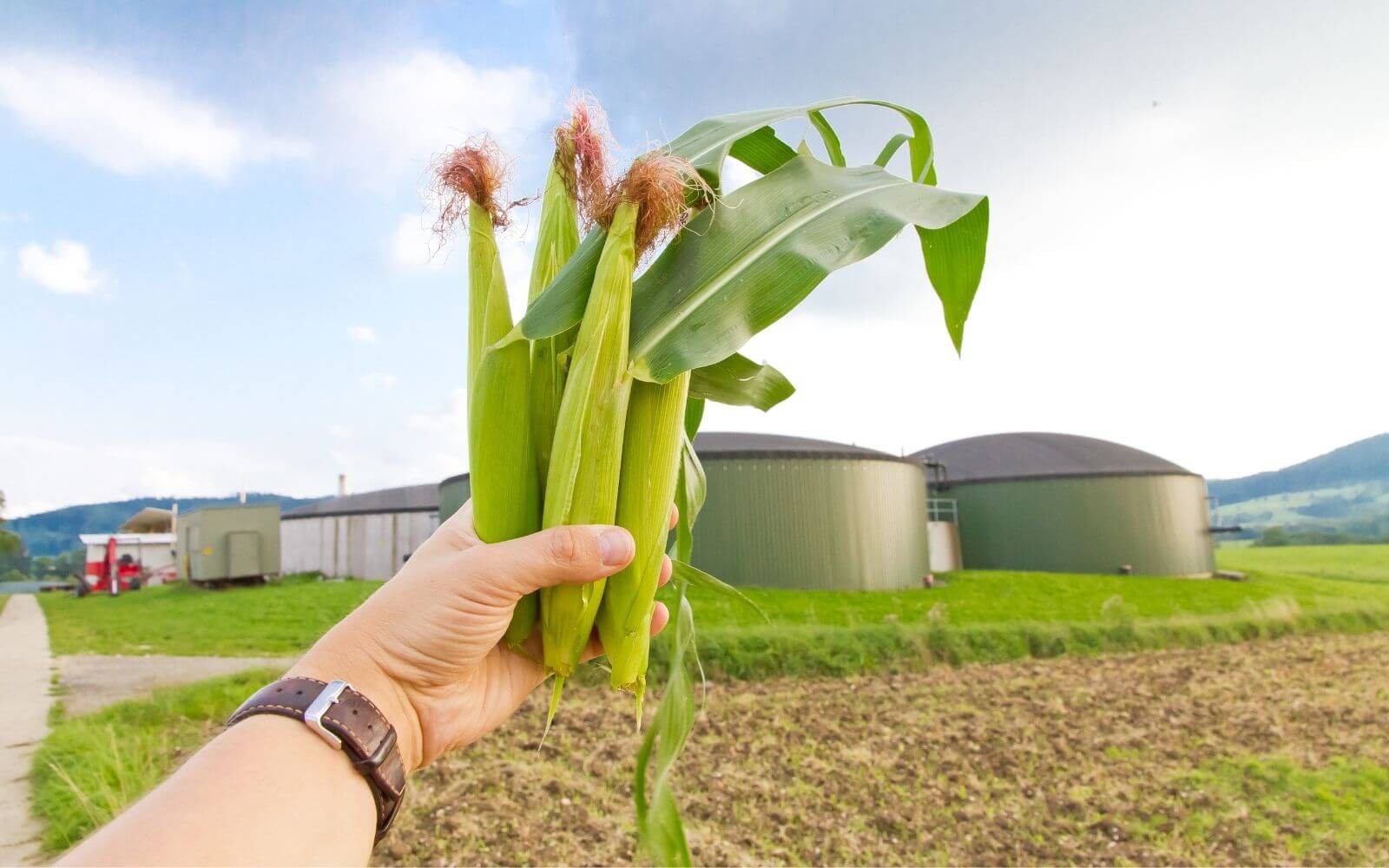
Biogas plants – components, function and increased efficiency
In rural areas, the green domes have long been familiar. But how exactly do biogas plants work? In essence, it can be said that a biogas plant produces a high-quality energy source from organic material.
In principle, the production process of biogas is simple. Organic waste, liquid manure, solid manure, energy crops – all of this is decomposed by microorganisms. Biogas is produced in an anaerobic process. In detail, the whole thing works like this:
Constant temperature allows the fermentation process
Step 1: Substrate management
In the pre-pit, the raw materials are first crushed by shredding, grinding or crushing. This is the only way to give the substances the necessary consistency so that they can later be optimally decomposed by microorganisms.
Step 2: Biogas production
The second step takes place in the fermenter, the heart of a biogas plant. Here there is a constant temperature of about 40°C. The temperature is ideal for microorganisms to break down the plant and animal substances and to multiply themselves. The degradation process takes place in the absence of light and oxygen. The substrate is constantly stirred. This is called the fermentation process, which ensures that fats and carboxylic acids are metabolized into alcohols. Proteins are broken down to hydrogen sulfide and ammonia. Subsequently, further fatty acids, carboxylic acids and alcohols are converted to acetic acid, hydrogen and carbon dioxide. Methane is produced in two ways:
On the one hand, by a reaction of acetic acid, which splits:
CH3COOH⟶CH4+CO2
on the other hand, from the reaction of carbon dioxide and hydrogen:
CO2+4H2⟶CH4+2H2O
The microorganisms now secrete gases that rise as bubbles from the fermentation mass. The so-called biogas collects in the dome and can be discharged.
Step 3: Recycle fermentation residues
During biogas production, residues of the raw material remain. These are now pumped out and further processed.
Step 4: Biogas storage:
The finished biogas is stored in a gas storage facility and distributed from there for further use.
The biogas that enters the plant’s combined heat and power plant from the gas storage tank is used to generate both electricity and heat. The more optimal the fermentation, the greater the gas yield. The more gas, the more energy can be generated. However, a combined heat and power plant cannot process the entire amount of available gas in one go. Therefore, intermediate storage is necessary. In addition, some biogas plants are equipped with upgrading technology that can be used to convert biogas into biomethane. And biomethane can be fed into a public gas grid.
For the most part, biogas consists of combustible methane (CH4). The methane content varies between 50 and 75 percent, depending on the starting material. Other components include water, nitrogen, oxygen, hydrogen sulfide and carbon dioxide. Gas purification (dewatering and desulphurisation) is advantageous for particularly effective energy generation.
Fermentation residues that remain after decomposition can be reused as fertilizer in gardening, landscaping and agriculture. They are particularly rich in humus-forming nutrients.
Optimal interaction for maximum efficiency
Biogas plant vs. sports team: At first glance, these two things couldn’t be more different. But they have one thing in common: Only through an optimal interaction of all components, a smooth and successful process can be achieved.
It therefore makes sense to keep an eye on all optimization potentials of a biogas plant and to find out whether and where weak points are located. Some of our customers rely on the following products to optimize the processes of their biogas plants:
Cobalt-II/III-oxide
Cobalt sulfate heptahydrate
Manganese II acetate tetrahydrate
Sodium molybdate dihydrate
Sodium tungstate dihydrate
Nickel II sulfate hexahydrate
Do you have any questions about this? Then feel free to send us a message here.





 4c media
4c media